Competitive Formation Zones in Carbon Nanotube Float-Catalysis Synthesis: Growth in Length vs. Growth Suppression
Abstract
1. Introduction
2. Materials and Methods
2.1. Experimental Setup and Conditions
2.2. CFD Simulations Setup
2.3. Samples Characterization
3. Results
3.1. CFD Simulations of the Synthesis Zone
3.2. Identification of Multishell Carbon Nanocapsules and CNT Growth Mechanism Insight
3.3. Characterization and TEM Analysis of Multishell Carbon Nanocapsules
4. Conclusions
Author Contributions
Funding
Informed Consent Statement
Data Availability Statement
Acknowledgments
Conflicts of Interest
References
- Saifuddin, N.; Raziah, A.Z.; Junizah, A.R. Carbon Nanotubes: A Review on Structure and Their Interaction with Proteins. J. Chem. 2013, 2013, 676815. [Google Scholar] [CrossRef]
- Medyantseva, E.P.; Brusnitsyn, D.V.; Varlamova, R.M.; Maksimov, A.A.; Fattakhova, A.N.; Konovalova, O.A.; Budnikov, G.K. Effect of nanostructured materials as electrode surface modifiers on the analytical capacity of amperometric biosensors. Russ. J. Appl. Chem. 2015, 88, 40–49. [Google Scholar] [CrossRef]
- Abdalla, S.; Al-Marzouki, F.; Al-Ghamdi, A.A.; Abdel-Daiem, A. Different Technical Applications of Carbon Nanotubes. Nanoscale Res. Lett. 2015, 10, 358. [Google Scholar] [CrossRef] [PubMed]
- Jiang, X.; Yang, X.; Zhu, Y.; Yao, Y.; Zhao, P.; Li, C. Graphene/carbon-coated Fe3O4 nanoparticle hybrids for enhanced lithium storage. J. Mater. Chem. A 2015, 3, 2361–2369. [Google Scholar] [CrossRef]
- Mikhalchan, A.; Gspann, T.; Windle, A. Aligned carbon nanotube–epoxy composites: The effect of nanotube organization on strength, stiffness, and toughness. J. Mater. Sci. 2016, 51, 10005–10025. [Google Scholar] [CrossRef]
- Lin, W.; Shi, Q.Q.; Chen, H.; Wang, J.N. Mechanical properties of carbon nanotube fibers reinforced epoxy resin composite films prepared by wet winding. Carbon 2019, 153, 308–314. [Google Scholar] [CrossRef]
- Shin, J.; Lee, K.; Jung, Y.; Park, B.; Yang, S.; Kim, T.; Lee, S. Mechanical Properties and Epoxy Resin Infiltration Behavior of Carbon-Nanotube-Fiber-Based Single-Fiber Composites. Materials 2020, 14, 106. [Google Scholar] [CrossRef]
- Szabó, A.; Perri, C.; Csató, A.; Giordano, G.; Vuono, D.; Nagy, J.B. Synthesis Methods of Carbon Nanotubes and Related Materials. Materials 2010, 3, 3092–3140. [Google Scholar] [CrossRef]
- Prasek, J.; Drbohlavova, J.; Chomoucka, J.; Hubalek, J.; Jasek, O.; Adam, V.; Kizek, R. Methods for carbon nanotubes synthesis—Review. J. Mater. Chem. 2011, 21, 15872–15884. [Google Scholar] [CrossRef]
- Vilatela, J.; Deng, L.; Kinloch, I.; Young, R.; Windle, A. Structure of and stress transfer in fibres spun from carbon nanotubes produced by chemical vapour deposition. Carbon 2011, 49, 4149–4158. [Google Scholar] [CrossRef]
- Conroy, D.; Moisala, A.; Cardoso, S.; Windle, A.; Davidson, J. Carbon nanotube reactor: Ferrocene decomposition, iron particle growth, nanotube aggregation and scale-up. Chem. Eng. Sci. 2010, 65, 2965–2977. [Google Scholar] [CrossRef]
- Yadav, M.; Dasgupta, K.; Patwardhan, A.W.; Joshi, J.B. Controlling the carbon nanotube type with processing parameters synthesized by floating catalyst chemical vapour deposition. Mater. Today: Proc. 2019, 18, 1039–1043. [Google Scholar] [CrossRef]
- Mordkovich, V.; Kazennov, N.; Ermolaev, V.; Zhukova, E.; Karaeva, A. Scaled-up process for producing longer carbon nanotubes and carbon cotton by macro-spools. Diam. Relat. Mater. 2018, 83, 15–20. [Google Scholar] [CrossRef]
- Karaeva, A.R.; Khaskov, M.A.; Mitberg, E.B.; Kulnitskiy, B.A.; Perezhogin, I.A.; Ivanov, L.A.; Denisov, V.N.; Kirichenko, A.N.; Mordkovich, V.Z. Longer Carbon Nanotubes by Controlled Catalytic Growth in the Presence of Water Vapor, Fullerenes, Nanotub. Carbon Nanostructures 2012, 20, 411–418. [Google Scholar] [CrossRef]
- Banfield, J.F.; Wasilewski, P.J.; Veblen, D.R. TEM study of relationships between the microstructures and magnetic properties of strongly magnetized magnetite and maghemite. Am. Mineral. 1994, 79, 654–667. [Google Scholar]
- Smith, P.P.K. The observation of enantiomorphous domains in a natural maghemite. Contrib. Miner. Pet. 1979, 69, 249–254. [Google Scholar] [CrossRef]
- Bagramov, R.H.; Blank, V.D.; Serebryanaya, N.R.; Dubitsky, G.A.; Tatyanin, E.V.; Aksenenkov, V.V. High Pressures Synthesis of Iron Carbide Nanoparticles Covered with Onion-Like Carbon Shells. Fuller. Nanotub. Carbon Nanostructures 2012, 20, 41–48. [Google Scholar] [CrossRef]
- Ruoff, R.S.; Lorents, D.C.; Chan, B.; Malhotra, R.; Subramoney, S. Single Crystal Metals Encapsulated in Carbon Nanoparticles. Science 1993, 259, 346–348. [Google Scholar] [CrossRef]
- Saito, Y. Nanoparticles and filled nanocapsules. Carbon 1995, 33, 979–988. [Google Scholar] [CrossRef]
- Dravid, V.P.; Host, J.J.; Teng, M.H.; Hwang, B.E.J.; Johnson, D.L.; Mason, T.O.; Weertman, J.R. Controlled-size nanocapsules. Nature 1995, 374, 602. [Google Scholar] [CrossRef]
- Fernández-García, M.; Gorria, P.; Sevilla, M.; Fuertes, A.; Grenèche, J.; Blanco, J. Onion-like nanoparticles with γ-Fe core surrounded by a α–Fe/Fe-oxide double shell. J. Alloys Compd. 2011, 509, S320–S322. [Google Scholar] [CrossRef]
- Kulnitskiy, B.A.; Mordkovich, V.Z.; Karaeva, A.R.; Urvanov, S.A.; Blank, V.D. Cubic and tetragonal maghemite formation inside carbon nanotubes under chemical vapor deposition process conditions. Fuller. Nanotub. Carbon Nanostructures 2020, 28, 913–918. [Google Scholar] [CrossRef]
- Blank, V.D.; Kulnitskiy, B.A.; Batov, D.V.; Bangert, U.; Gutiérrez-Sosa, A.; Harvey, A.J. Electron microscopy and electron energy loss spectroscopy studies of carbon fiber formation at Fe catalysts. J. Appl. Phys. 2002, 91, 1657–1660. [Google Scholar] [CrossRef]
- Yang, Y.; Fan, X.; Casillas, G.; Peng, Z.; Ruan, G.; Wang, G.; Yacaman, M.J.; Tour, J.M. Three-Dimensional Nanoporous Fe2O3/Fe3C-Graphene Heterogeneous Thin Films for Lithium-Ion Batteries. ACS Nano 2014, 8, 3939–3946. [Google Scholar] [CrossRef] [PubMed]
- Kim, H.J.; Runk, R.B. The characterization of the thin oxide film formed over Fe3C at 300 °C. Oxid. Met. 1970, 2, 307–318. [Google Scholar] [CrossRef]
- Darken, L.S.; Gurry, R.W. The System Iron—Oxygen. II. Equilibrium and Thermodynamics of Liquid Oxide and Other Phases. J. Am. Chem. Soc. 1946, 68, 798–816. [Google Scholar] [CrossRef]
- Levitas, V.; Nesterenko, V.; Meyers, M. Strain-induced structural changes and chemical reactions—I. Thermomechanical and kinetic models. Acta Mater. 1998, 46, 5929–5945. [Google Scholar] [CrossRef]
- A Kulnitskiy, B.; Blank, V.D.; I Levitas, V.; A Perezhogin, I.; Popov, M.Y.; Kirichenko, A.N.; Tyukalova, E.V. Transformation-deformation bands in C60after the treatment in a shear diamond anvil cell. Mater. Res. Express 2016, 3, 045601. [Google Scholar] [CrossRef]
- Sokolov, B.K.; Gubernatorov, V.V.; Gervasyeva, I.V.; Sbitnev, A.K.; Vladimirov, L.R. The Deformation and Shear Bands in the Fe–3%Si Alloy. Textures Microstruct. 1999, 32, 21–39. [Google Scholar] [CrossRef]
- Zhao, X.; Zhang, Z.; Wang, L.; Xi, K.; Cao, Q.; Wang, D.; Yang, Y.; Du, Y. Excellent microwave absorption property of Graphene-coated Fe nanocomposites. Sci. Rep. 2013, 3, 3421. [Google Scholar] [CrossRef]
- Li, Y.; Liu, R.; Pang, X.; Zhao, X.; Zhang, Y.; Qin, G.; Zhang, X. Fe@C nanocapsules with substitutional sulfur heteroatoms in graphitic shells for improving microwave absorption at gigahertz frequencies. Carbon 2018, 126, 372–381. [Google Scholar] [CrossRef]
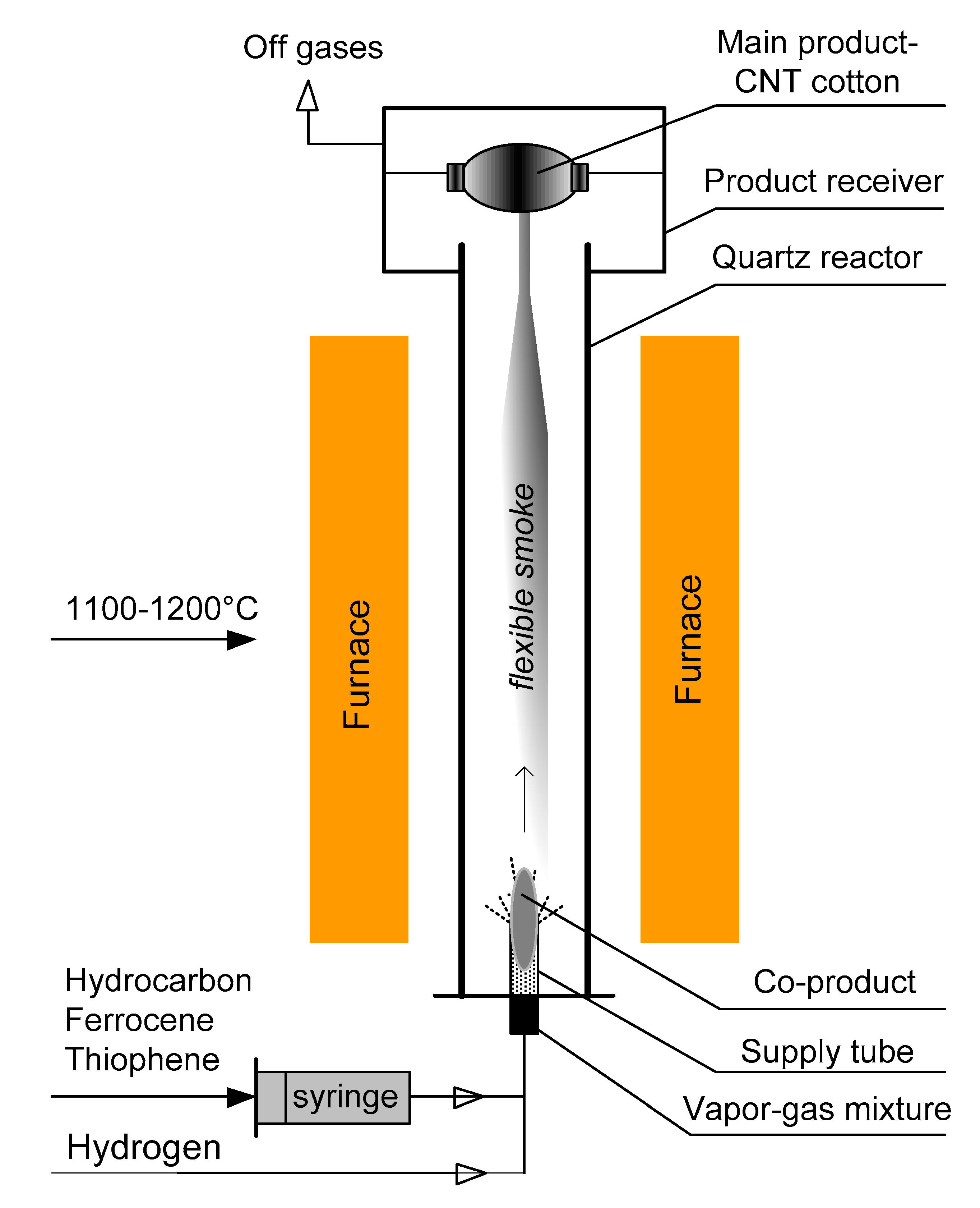
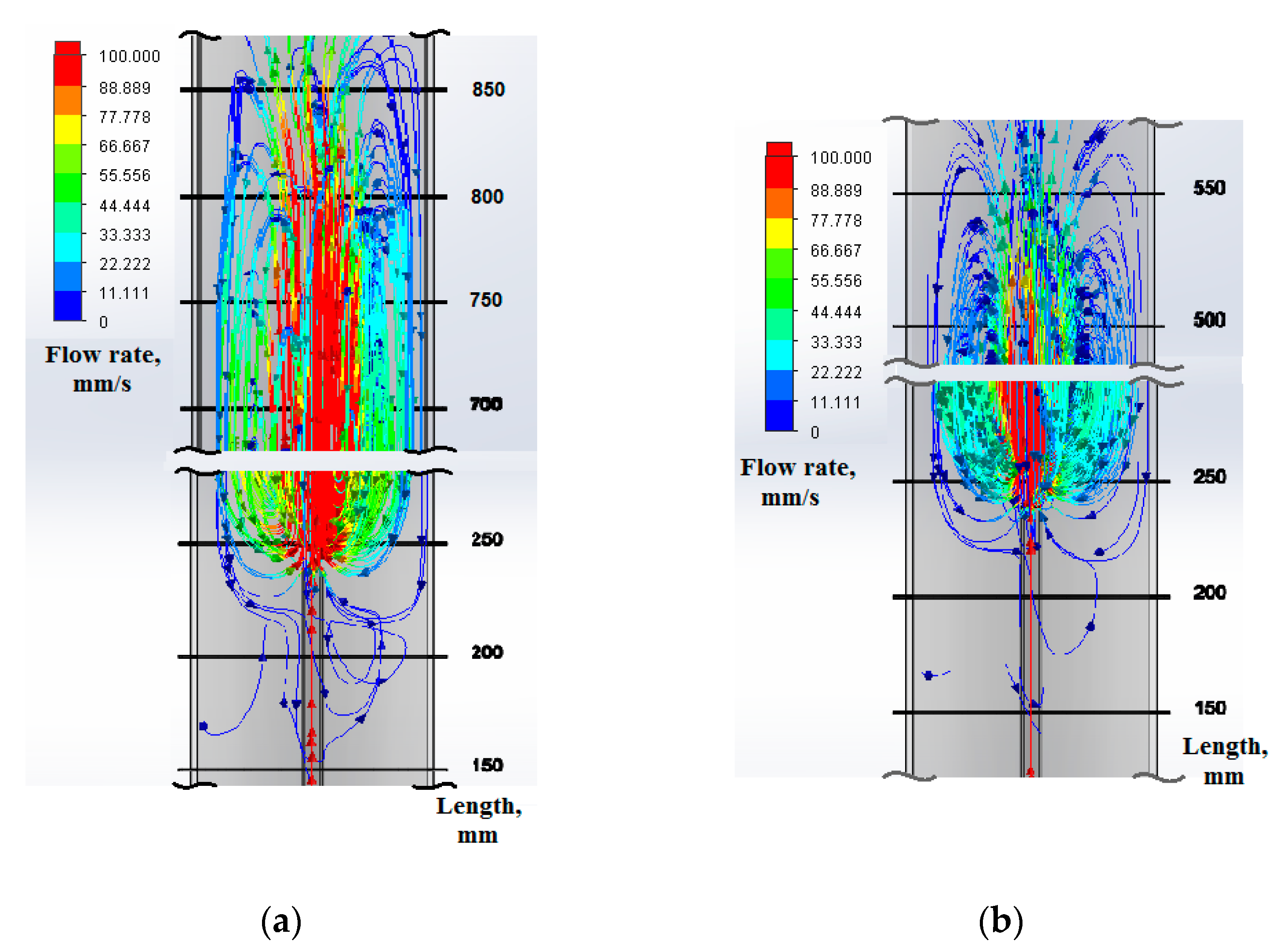
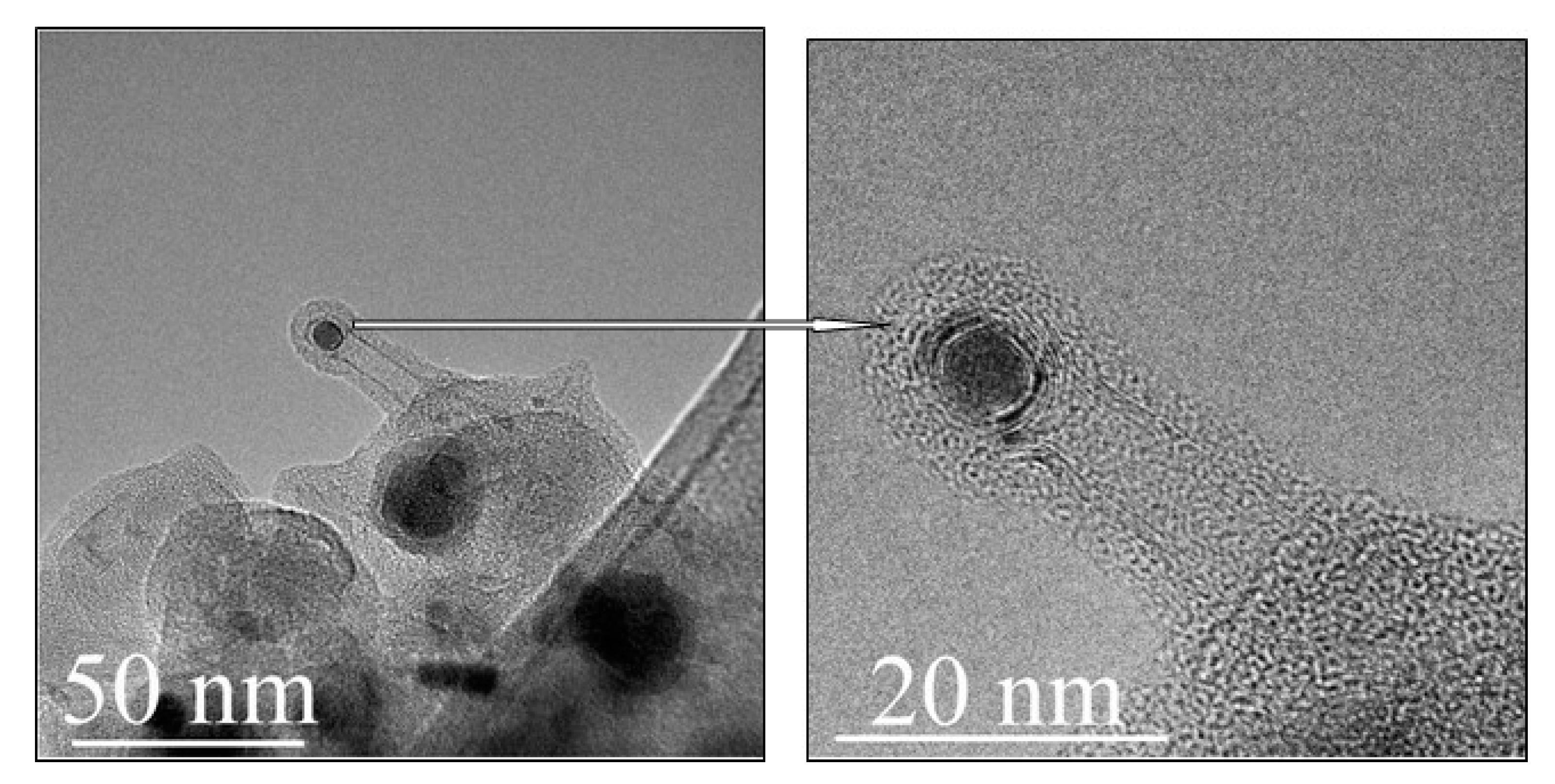
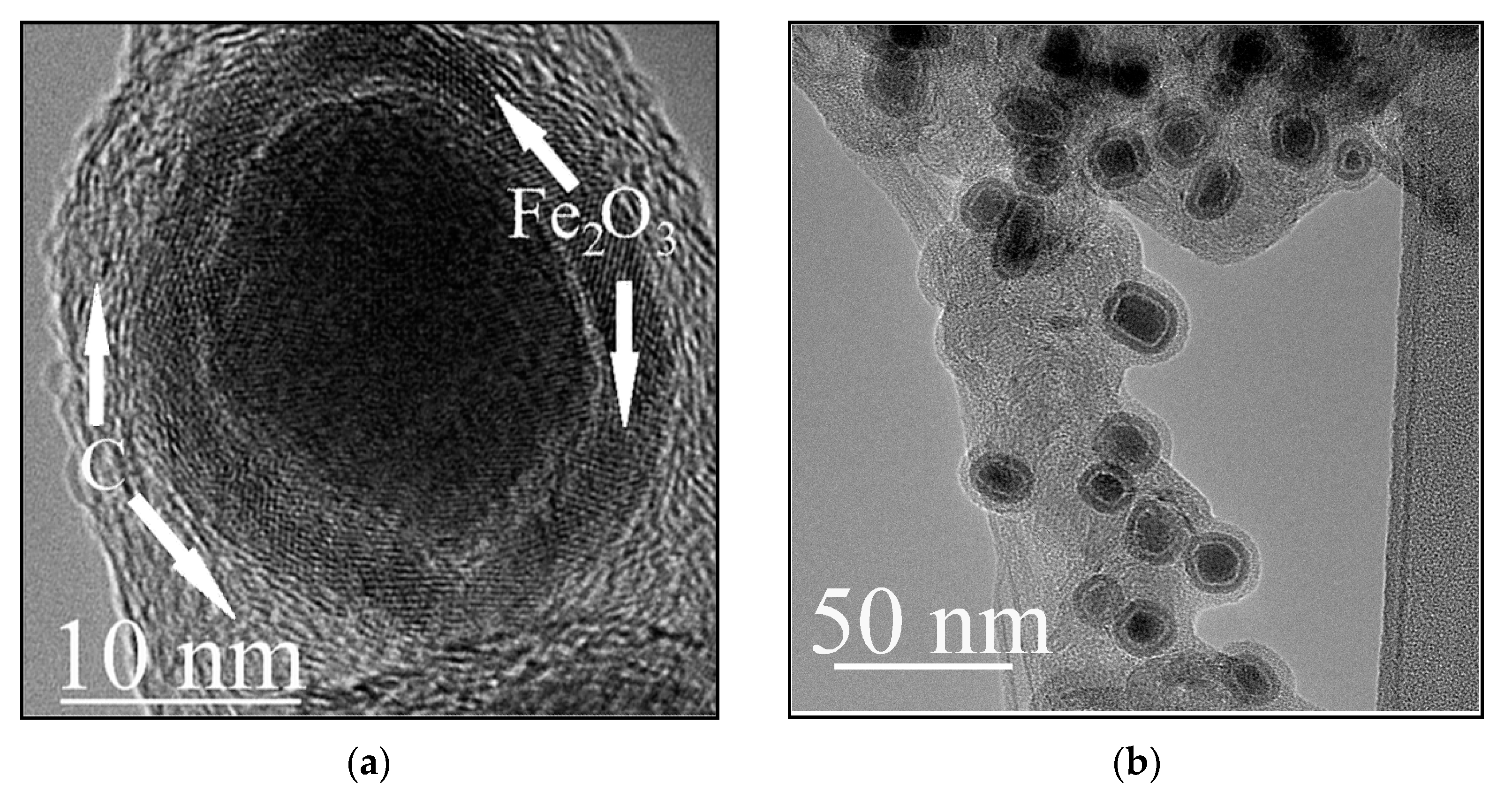
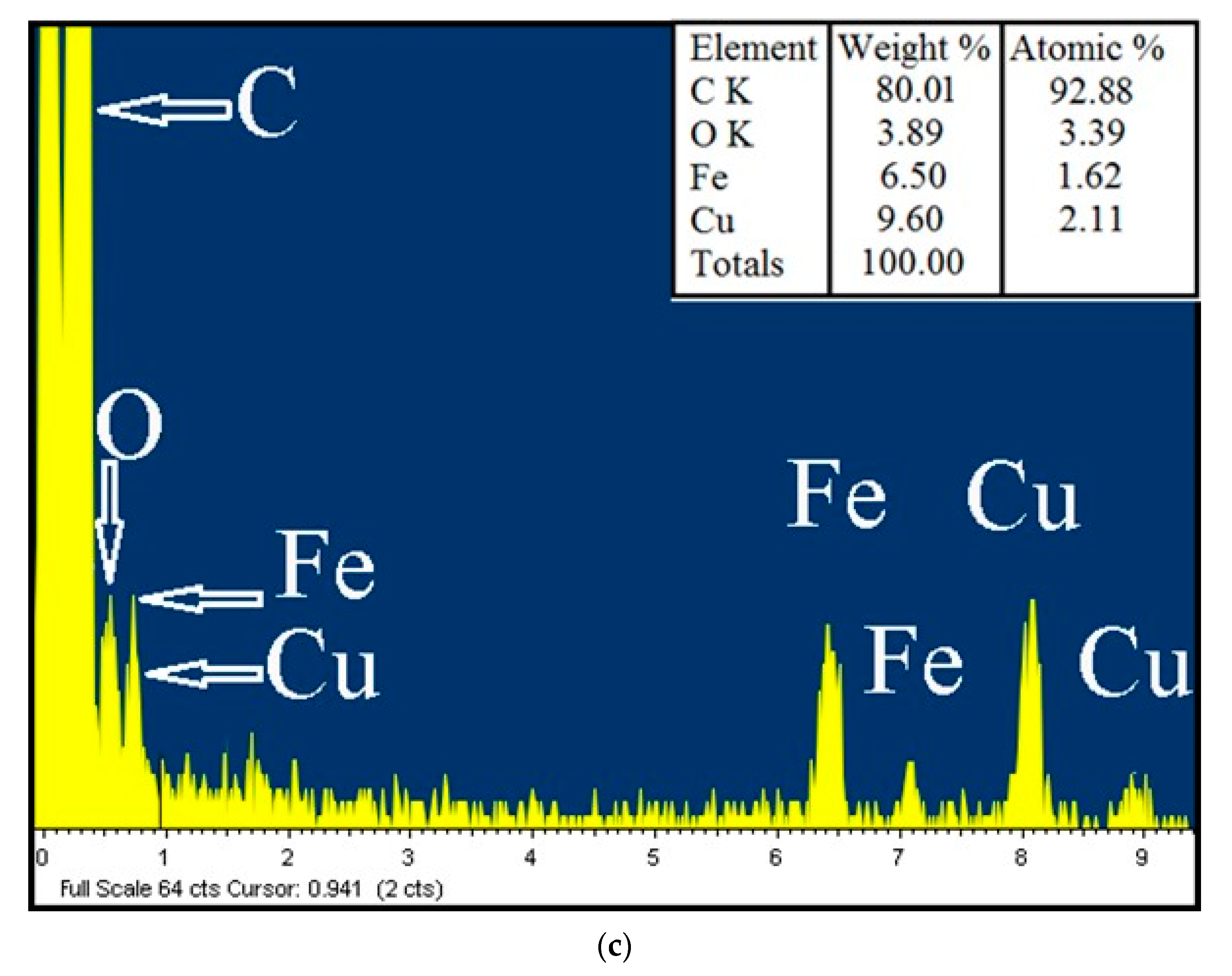
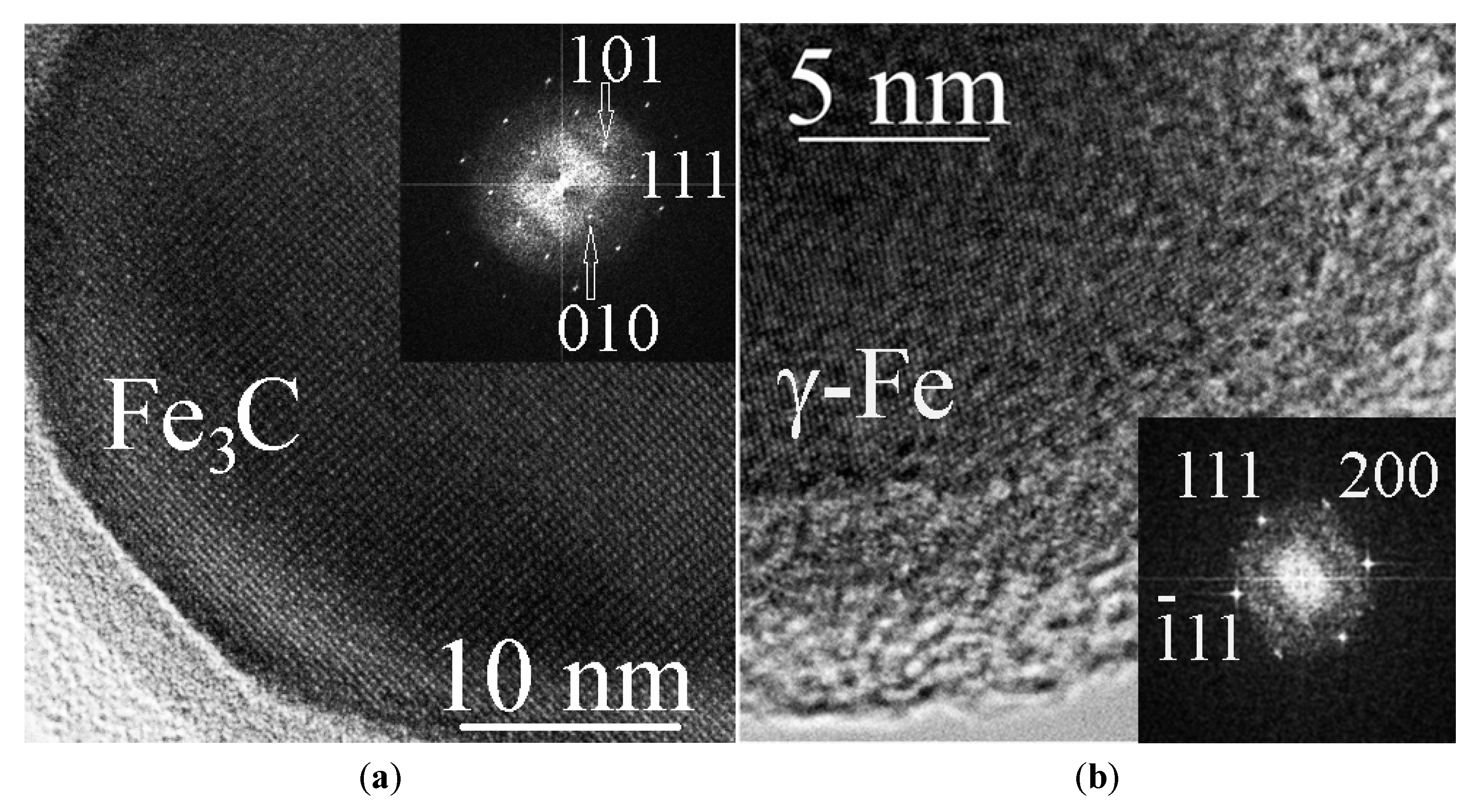
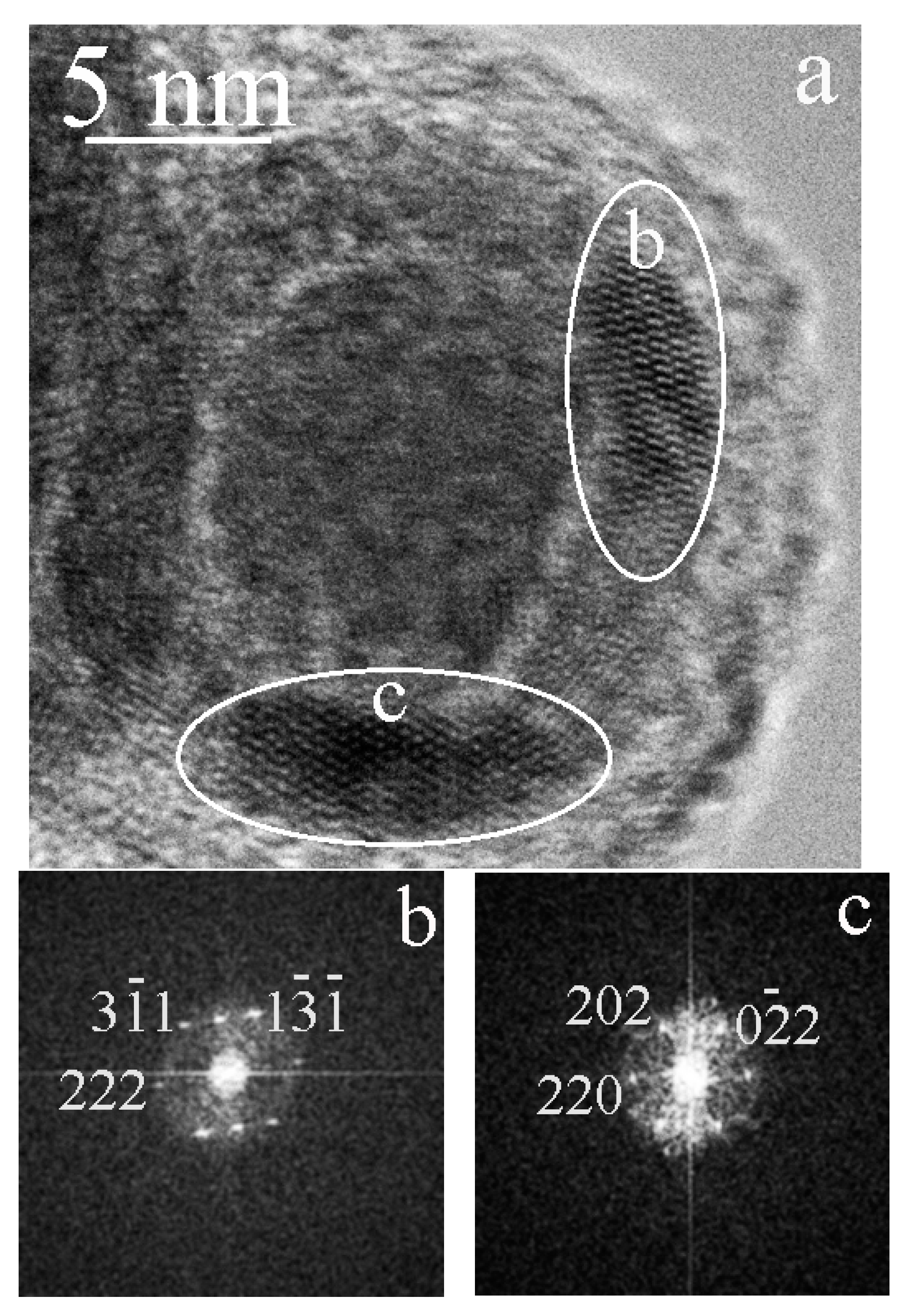

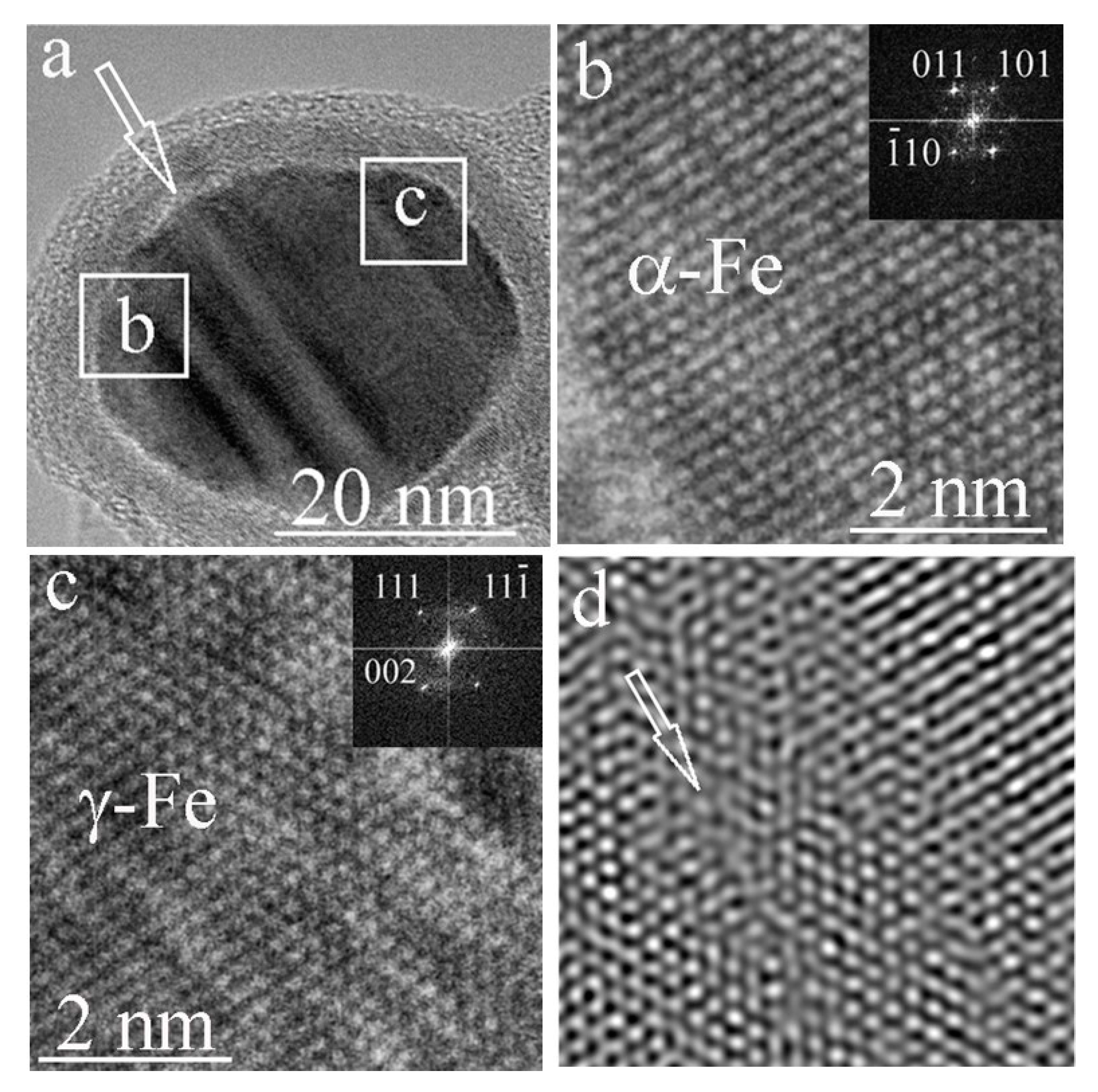
Publisher’s Note: MDPI stays neutral with regard to jurisdictional claims in published maps and institutional affiliations. |
© 2022 by the authors. Licensee MDPI, Basel, Switzerland. This article is an open access article distributed under the terms and conditions of the Creative Commons Attribution (CC BY) license (https://creativecommons.org/licenses/by/4.0/).
Share and Cite
Mordkovich, V.Z.; Karaeva, A.R.; Kazennov, N.V.; Mitberg, E.B.; Nasraoui, M.; Kulnitskiy, B.A.; Blank, V.D. Competitive Formation Zones in Carbon Nanotube Float-Catalysis Synthesis: Growth in Length vs. Growth Suppression. Materials 2022, 15, 7377. https://doi.org/10.3390/ma15207377
Mordkovich VZ, Karaeva AR, Kazennov NV, Mitberg EB, Nasraoui M, Kulnitskiy BA, Blank VD. Competitive Formation Zones in Carbon Nanotube Float-Catalysis Synthesis: Growth in Length vs. Growth Suppression. Materials. 2022; 15(20):7377. https://doi.org/10.3390/ma15207377
Chicago/Turabian StyleMordkovich, Vladimir Z., Aida R. Karaeva, Nikita V. Kazennov, Eduard B. Mitberg, Mariem Nasraoui, Boris A. Kulnitskiy, and Vladimir D. Blank. 2022. "Competitive Formation Zones in Carbon Nanotube Float-Catalysis Synthesis: Growth in Length vs. Growth Suppression" Materials 15, no. 20: 7377. https://doi.org/10.3390/ma15207377
APA StyleMordkovich, V. Z., Karaeva, A. R., Kazennov, N. V., Mitberg, E. B., Nasraoui, M., Kulnitskiy, B. A., & Blank, V. D. (2022). Competitive Formation Zones in Carbon Nanotube Float-Catalysis Synthesis: Growth in Length vs. Growth Suppression. Materials, 15(20), 7377. https://doi.org/10.3390/ma15207377






